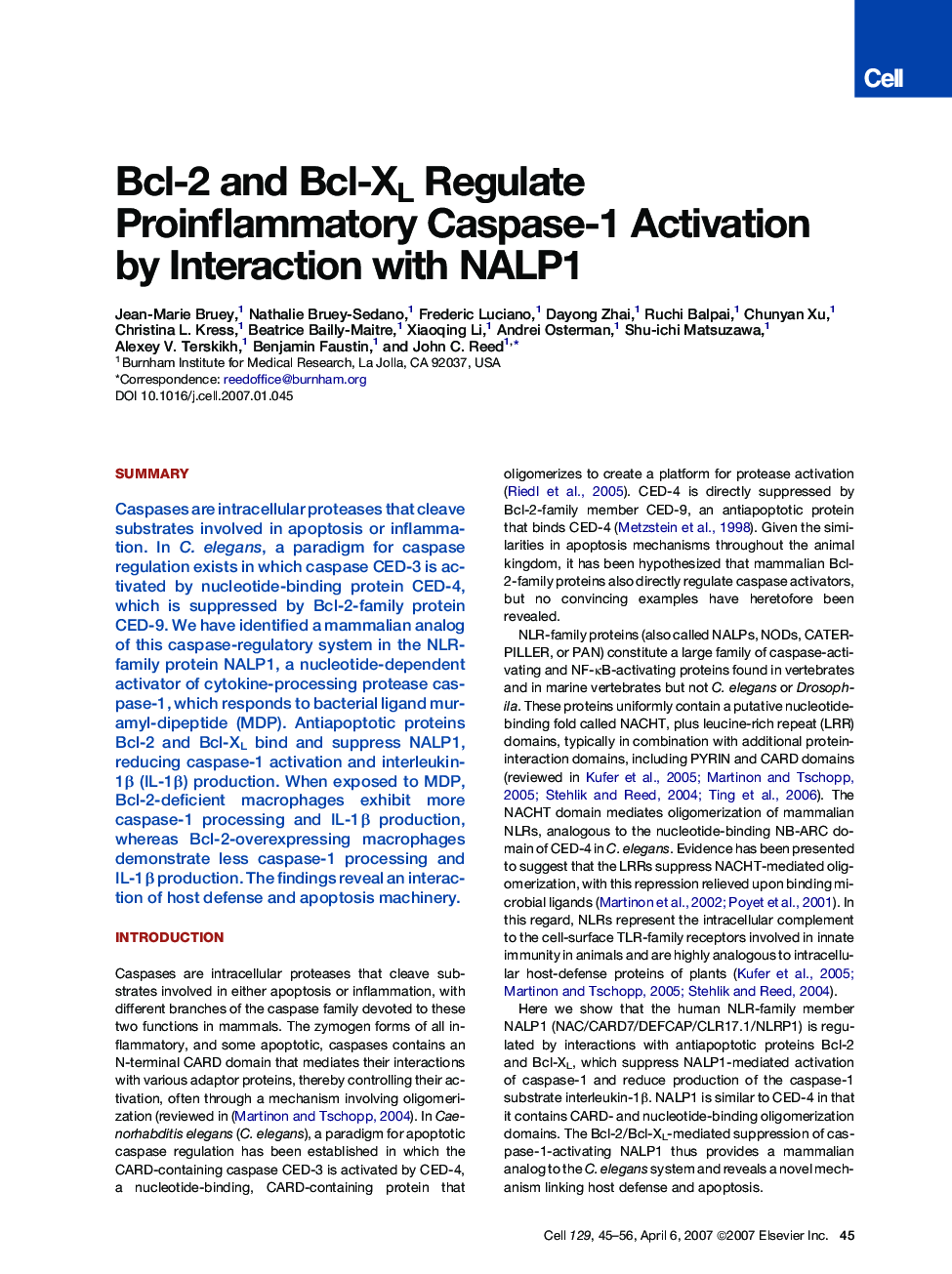| Article ID | Journal | Published Year | Pages | File Type |
|---|---|---|---|---|
| 2038348 | Cell | 2007 | 12 Pages |
SummaryCaspases are intracellular proteases that cleave substrates involved in apoptosis or inflammation. In C. elegans, a paradigm for caspase regulation exists in which caspase CED-3 is activated by nucleotide-binding protein CED-4, which is suppressed by Bcl-2-family protein CED-9. We have identified a mammalian analog of this caspase-regulatory system in the NLR-family protein NALP1, a nucleotide-dependent activator of cytokine-processing protease caspase-1, which responds to bacterial ligand muramyl-dipeptide (MDP). Antiapoptotic proteins Bcl-2 and Bcl-XL bind and suppress NALP1, reducing caspase-1 activation and interleukin-1β (IL-1β) production. When exposed to MDP, Bcl-2-deficient macrophages exhibit more caspase-1 processing and IL-1β production, whereas Bcl-2-overexpressing macrophages demonstrate less caspase-1 processing and IL-1β production. The findings reveal an interaction of host defense and apoptosis machinery.
